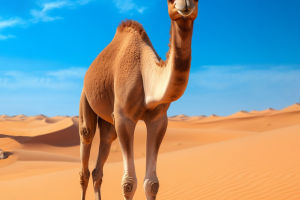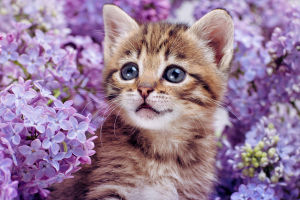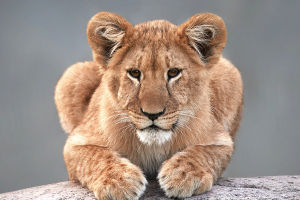
Stunning Lion Cub Facts

Lion cubs, with their endearing appearance and playful antics, embody the promise of the majestic lions they will one day become.
These young lions, born into one of nature’s most iconic species, offer a glimpse into the early stages of a life that will grow to command respect and awe.
Here are six intriguing facts about lion cubs that highlight their unique characteristics and the challenges they face.
1. Early Dependence
Lion cubs are born completely helpless and rely heavily on their mothers for survival. At birth, they are blind, deaf, and unable to walk. Their survival depends on their mother’s constant care, which includes nursing and keeping them warm. This intense period of dependency lasts for several weeks as the cubs gradually gain strength and begin to explore their surroundings.
Related
 Discover the Secrets of Sea Turtles: Why These Ancient Mariners Are More Amazing Than You Think!
Discover the Secrets of Sea Turtles: Why These Ancient Mariners Are More Amazing Than You Think!
 Lion cubs represent the beginning of the journey to becoming one of nature’s most powerful predators.
Lion cubs represent the beginning of the journey to becoming one of nature’s most powerful predators.
 Dolphins use amazing intelligence and teamwork to solve problems and communicate, making them the geniuses of the sea!
Dolphins use amazing intelligence and teamwork to solve problems and communicate, making them the geniuses of the sea!
 The dromedary camel thrives in extreme deserts, thanks to its unique adaptations and vital societal role.
The dromedary camel thrives in extreme deserts, thanks to its unique adaptations and vital societal role.
 Cats are more emotionally attuned to humans than we thought, subtly responding to our facial cues.
Cats are more emotionally attuned to humans than we thought, subtly responding to our facial cues.
 The Majestic Lion: Why Called As King of the Jungle!
The Majestic Lion: Why Called As King of the Jungle!
2. Rapid Growth
The growth rate of lion cubs is remarkable. Within just a few months, they double their weight, and by the time they are around six months old, they start to develop their distinctive manes. This rapid growth is crucial as it prepares them for the challenges of life in the wild, including learning to hunt and establish their place within the pride.
3. Playful Behavior
Play is a crucial part of a lion cub’s development. Cubs engage in mock fights, chase games, and play with each other to develop the skills they will need as adults. These playful interactions help improve their physical abilities and social skills, which are essential for their future roles within the pride.
10 Surprising Facts About Lion Cubs You Need to Know | Cute Baby Animals | Lion Cubs Documentary
Video by 72 Mentors
4. Social Structure Learning
From a young age, lion cubs begin to learn about the complex social structure of their pride. They observe and interact with other members of the pride, including their siblings and adults. This social learning is vital as it helps them understand their role within the pride and the dynamics of group living.
5. Short-Lived Vulnerability
Lion cubs are particularly vulnerable to predators, including hyenas and even other lions. The mortality rate for cubs is high, with many not surviving past their first year. This vulnerability is why the protection and nurturing of the mother and other pride members are so critical during their early months.
6. Distinctive Markings
Lion cubs are born with unique spots on their fur that eventually fade as they grow older. These spots help camouflage them in their early stages when they are most vulnerable. The fading of these markings signals their transition from the vulnerable phase of cubhood to more robust and identifiable young lions.

Lykkers, lion cubs are not only adorable but also fascinating in their development and survival strategies. From their early dependence on their mothers to their playful learning experiences, every aspect of their growth is tailored to prepare them for the challenges of life in the wild. Understanding these aspects helps us appreciate the intricate and delicate balance of life within the lion pride and underscores the importance of conservation efforts to ensure the survival of these majestic creatures.